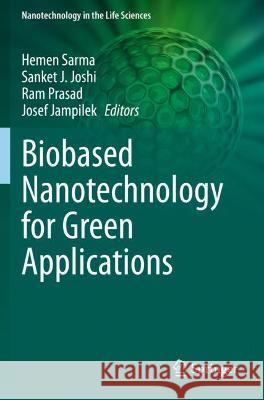Biobased Nanotechnology for Green Applications » książka
topmenu
Biobased Nanotechnology for Green Applications
ISBN-13: 9783030619879 / Angielski / Miękka / 2022
Biobased Nanotechnology for Green Applications
ISBN-13: 9783030619879 / Angielski / Miękka / 2022
cena 682,72
(netto: 650,21 VAT: 5%)
Najniższa cena z 30 dni: 655,41
(netto: 650,21 VAT: 5%)
Najniższa cena z 30 dni: 655,41
Termin realizacji zamówienia:
ok. 22 dni roboczych.
ok. 22 dni roboczych.
Darmowa dostawa!
Investigation on biobased nanomaterials has provided new insights into the rapidly advancing fields of the biomedical and environmental sciences by showing how these nanomaterials are effective in biomedicine and environmental remediation. These particles hold tremendous prospective applications, and are likely to become the next generation of particles in these areas. As such, research is ongoing and the data generated should have the potential for a sustainable future in both the environmental and biomedical fields.
This book presents important findings on the role of and identification of novel applications of biobased nanomaterials. Unlike other books in this field, this book focuses entirely on sustainable application and remediation in biomedicine and environmental science. The chapters are written in such a way as to make them accessible to the reader, and furthermore, the volume can be readily adopted as a reference, or used as a guide for further research.
This project was based on recent research (the last 5 years) and developed through an extensive literature search. The editors have also compiled some advanced, outstanding texts that should be of benefit to graduate students in their research.











